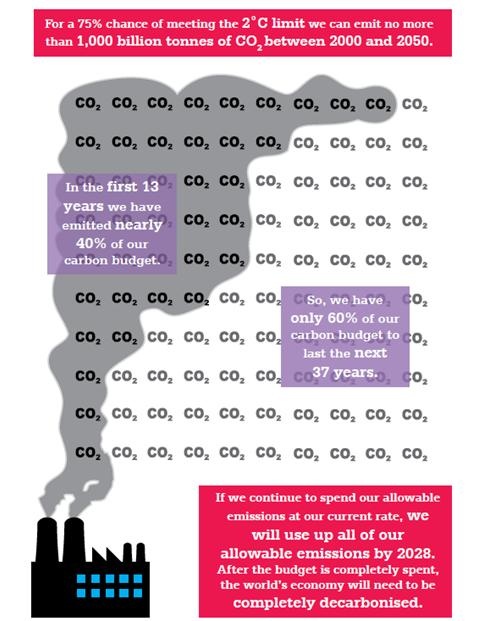Climate Commission hands down the maths
You probably don’t remember those pathetic Climate Clever ads put out in the dying days of the Howard government – paid for by your taxes, but they did make for some good satire. For example the mock campaign by Get-Up! In reading the Climate Commission’s latest report, The Critical Decade 2013: Climate change science, risks and response, it brought to mind imagery of a politician staring at the camera with a big dumb smile on their face saying:
“I’m a politician focussed on re-election in three years time. You want me to sign up to an emissions reduction target in 2050, several decades from now?…Sure, I can do that.”
Many people forget but the Howard government, not just that of Rudd/Gillard, agreed that emission cuts of at least 60 per cent by 2050 were necessary.
Of course politicians will gladly sign-up to an emission reduction target in 2050 – it’s a completely costless political exercise. With such a policy you get to make a few greenies smile, and no one else gets hurt, because you can defer off the real decisions to deliver the target to the never, never.
In this tradition, back in 2007 at the Bali meeting of the UN international climate treaty negotiations, an awful lot of nations agreed that we should be trying to limit global temperature rise over the century to no more than 2 degrees above pre-industrial levels. This was then reaffirmed in 2009 at Copenhagen, which included both the US and China as signatories.
It should be noted that the Liberal-National Coalition supported Australia signing onto this 2 degree goal.
This all seems rather lovely, but the near-term implications of such a goal don’t seem to have filtered through to politicians across both Labor and the Coalition.
When you take a carbon emissions budget approach over the entire period to 2050, rather than a single year target approach, things start to look an awful lot more pressing. The infographic below from the Climate Commission report helps to explain the carbon budget in terms most people could appreciate.

Australia’s economic growth in recent years has been riding on a large expansion of coal and gas resource development. We’re already the largest or second largest producer of seaborne coal. We’re on track to achieve the same thing with liquefied natural gas.
But according to the Climate Commission’s report, the maths of a 2 degree limit don’t compute with such an expansion:
“Over recent years there has been a resurgence in the discovery and exploitation of new reserves of fossil fuels in Australia and elsewhere, with the prospect of new coal fields being developed and non-conventional sources such as coal-seam gas and shale oil being exploited. But how does this rapid increase of new and non-conventional fossil fuel reserves stack up against the budget approach to emission reductions? The answer is sobering.
“The current amount of carbon embedded in the world’s indicated fossil fuel reserves (coal, oil and gas) would, if all were burned, emit an estimated 2,860 billion tonnes of CO2. This is nearly five times the allowable budget of about 600 billion tonnes to stay within the 2°C limit.”
The Climate Commission hasn’t done anything new by pointing out that the huge investment in coal and gas resource expansion is equivalent to an unsustainable speculative bubble. But coming from a government established institution, it is much harder for politicians to ignore its uncomfortable conclusions.
This is really a pretty simple maths question you’d get in primary school:
Jimmy has 1000 billion tonnes of CO2 to spend over his lifetime from 2000 to 2050. 13 years in, he’s already spent 40 per cent of his budget.
Does this mean?
a) He has decided to be like a Rock’n’ Roll star – live hard, die young.
b) If you are politically inclined towards Labor – he desperately requires a compulsory superannuation scheme imposed to save for his future.
c) If you are politically inclined towards the Coalition – he is a completely irresponsible carbon-bludging layabout who requires a Northern Territory-style intervention of income management and no grog. Plus he should be conscripted to the Green Army for a period to learn some discipline.
d) All of the above.
Politicians have been willing to recognise a similar problem in other contexts. But they’re not quite ready to recognise this same problem in relation to the climate.
















